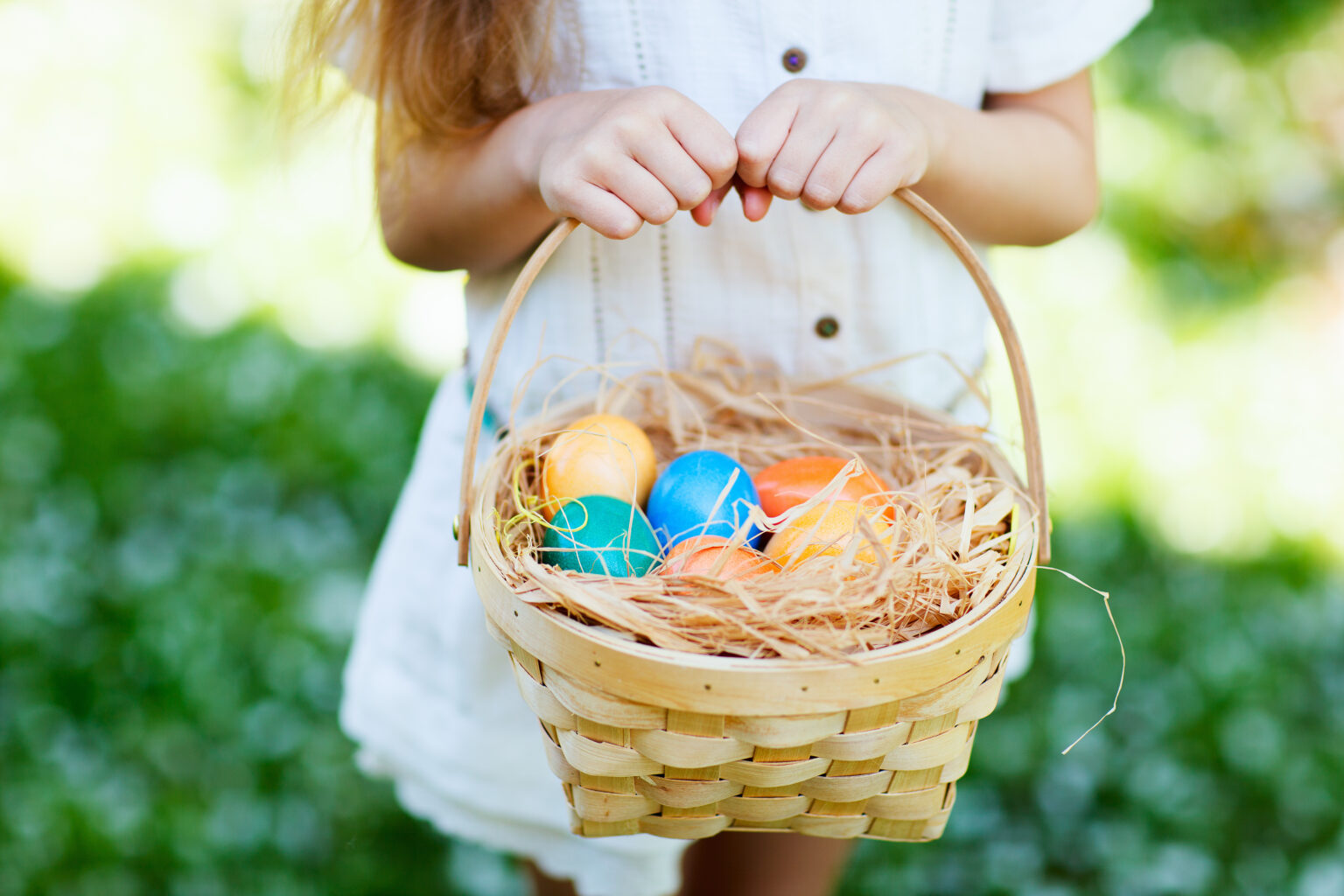Looking for a fun activity to celebrate Easter? Look no further than an egg hunt! This classic Easter tradition has been around for centuries and is enjoyed by kids and adults alike. Not only does it involve colorful eggs and candy, but it also provides a little friendly competition and the chance to win prizes.
The origins of egg hunts can be traced back to a variety of Easter traditions, including the colorful egg dying custom that is said to be related to a story about Mary Magdalene and her encounter with Jesus Christ after his Resurrection. Today, egg hunts are a beloved part of Easter celebrations and provide the perfect excuse to get outside and enjoy the springtime air. Whether you’re hosting a large-scale hunt or a small at-home event, follow these easy steps to pull off an epic Easter egg hunt.
1. Your Egg Hunt Doesn’t Have to Be Easter Sunday
When planning your Easter egg hunt, it’s important to choose a date that works best for you and your guests. While Easter Sunday is the traditional day for egg hunts, it’s not mandatory. Consider hosting your hunt on Easter weekend or the weekend before to give everyone a chance to attend. Keep in mind that there may be other egg hunts happening in your neighborhood, so choose a date that doesn’t conflict with them.
2. Select a Great Location
When choosing a location for your Easter egg hunt, it’s important to consider a few key factors. First, make sure the area is large enough for your group, but not so large that it becomes difficult to find the eggs. Additionally, it’s important to choose a spot where you can clearly define the boundaries and have plenty of hiding options. Be sure to avoid areas near roads, bodies of water, and other hazards. If you’re hosting indoors, try to keep the adventure on one floor to avoid any issues with stairs. By carefully selecting your location, you can ensure a successful and safe Easter egg hunt for all involved.
3. Do You Have a Bad Weather Option?
Springtime weather can be unpredictable, so it’s important to have a plan in case of inclement conditions. If you’re hosting an outdoor event, consider selecting a rain date or moving the celebration indoors to a home or other indoor venue.
When hosting the event indoors, designate the area for the egg hunt by using baby gates, closing doors, or marking the territory with ropes or ribbons. This will prevent children from wandering into potentially hazardous areas of the home.
Having a contingency plan in place will ensure that your celebration is still a success, even if the weather doesn’t cooperate.
4. Don’t Forget the Eggs
When it comes to hosting an Easter egg hunt, eggs are the most essential item. While some hosts prefer to dye real eggs, it’s often safer to use plastic or wooden eggs, especially if there are young children involved. Consider using a variety of eggs to make the hunt more exciting. We recommend hiding around 10 eggs per child, depending on their age. Make sure to stock up on enough eggs to ensure a fun and successful Easter egg hunt.
5. Plan Out the Surprises for Your Easter Eggs
When it comes to filling your Easter eggs, the possibilities are endless. Whether you’re using plastic eggs or real ones, you can fill them with a variety of fun and exciting surprises. However, it’s important to keep your guest list in mind when choosing what to fill them with.
If you have young children attending your Easter egg hunt, be mindful of small items that could be choking hazards. Consider opting for non-food items if food allergies are a concern. Some ideas for filling your eggs include jelly beans, chocolate eggs, marshmallow Peeps, Easter-themed Hershey Kisses, fruit snacks, finger puppets, bouncy balls, coins (candy or real), temporary tattoos or stickers, squishy toys, hair clips or accessories, lip balm, slime, fun shaped erasers, Lego minifigs, friendship bracelets, play dough, bubble gum, matchbox cars, goldfish crackers, wind-up toys, whistles, earrings, small inflatable toys, small animal or dinosaur figurines, rubber ducks, and cute mini soaps.
If you don’t want to stuff eggs, consider having larger gifts for the kids. Think little Lego sets, art kits, or plush toys, and give one to each child as a parting gift after the hunting is over.
For a more challenging Easter egg hunt, consider putting clues in each egg toward finding a larger prize. Give the kids the first clue, and let them set off to find the rest of the eggs and reach their big gift. This will keep the kids engaged and entertained while also making the Easter egg hunt more exciting and memorable.
6. How Will You Decorate?
Add some extra charm to your holiday celebrations with festive decorations. Consider adding some inflatable holiday bunnies or cute little chicks to your yard. You can also place oversized eggs to create an exciting Easter egg hunt for the kids.
To create a warm and welcoming atmosphere, you may also want to plant some daffodils and other spring flowers in your yard or place them in pots and baskets along the path. These can also double as take-home gifts for your adult guests. With a little creativity, your holiday decor can be the talk of the town!
7. Have Easter Baskets, Buckets, and Pails at the Ready
To ensure a successful Easter egg hunt, it’s important to have egg-collecting gear for all your guests. Plan to have at least one vessel for goodies for every attendee. You could have fun making homemade Easter baskets, or offer tote bags, beach pails, or even cute small boxes as a fun alternative. Providing a variety of options will allow guests to choose what they prefer and ensure that everyone has a vessel to collect their eggs. Consider having extra vessels on hand in case some guests forget to bring their own.
8. Don’t Forget to Count the Eggs
To ensure all the eggs are accounted for after an Easter egg hunt, count them before hiding them. This allows for an accurate recount after the hunt is finished.
9. Hiding the Easter Eggs
When planning an Easter egg hunt, it’s important to choose hiding spots that are appropriate for the age range of the participants. For younger children, it’s best to place some eggs in more obvious locations like on an open lawn, while for older kids, you can challenge them by hiding eggs in more difficult spots such as inside a mailbox, in a plant bed, or behind a tree stump.
If you’re hosting an indoor hunt, be sure to move any fragile items like your grandmother’s china and your favorite glass vase to a safe spot outside of the hunt boundaries to avoid any accidental damage during the festivities.
10. Let’s Go!
If you’re hosting an Easter egg hunt with kids of different ages, consider starting in rounds by age group. To ensure fairness, allow the youngest hunters to go first. After they finish, give a countdown of 30 seconds to a minute before allowing older age groups to join in. Avoid making the countdown too long, as it may lead to frustration and resentment among the participants.
11. Count the Eggs Again
After hiding all the Easter eggs, it’s important to make sure that you have found all of them. Counting the eggs before hiding them can help make the final tally easier. It’s possible that some eggs may have been hidden in clever spots and forgotten about. To reward the kids who gather the most eggs, consider offering some cute and fun Easter prizes in addition to the goodies inside the plastic eggs.
12. Treat the Adults
After a successful Easter egg hunt, why not treat your guests to some sweet treats such as cookies or cupcakes? Alternatively, if you’re hosting in the morning, consider serving a delightful brunch for everyone to enjoy.
Frequently Asked Questions
If you’re planning an Easter egg hunt, you may have some questions about how to make it a success. Here are some of the most frequently asked questions about Easter egg hunts:
- Why do we hunt Easter eggs? The tradition of Easter egg hunts dates back to 16th-century Germany, when Martin Luther had men hide eggs for women and children to find. Today, it’s a fun activity for families and communities to celebrate the holiday.
- What should I put in the eggs for an Easter egg hunt? While you can put anything you like in Easter eggs, the most popular items are candy, small toys, and coins. Some ideas for small toys include bouncy balls, stickers, toy rings, or erasers. You could also put a single puzzle piece in each egg, and the children must combine their eggs to finish the puzzle.
- How many Easter eggs do you need for a hunt? On average, it’s best to have 10-15 eggs per child participating in the egg hunt. This will ensure a longer Easter egg hunt and the ability for each child to get their fair share of eggs.
- When should you do an Easter egg hunt? Ideally, Easter egg hunts should happen on Easter morning. This could be right when the kids get up at 8 a.m., after breakfast at 10 a.m., or after brunch at noon. But it’s also acceptable to have them on the weekend of Easter at any time of the day.
Remember to have fun and be safe during your Easter egg hunt!









